Restoring Ken Malloy Harbor Regional Park
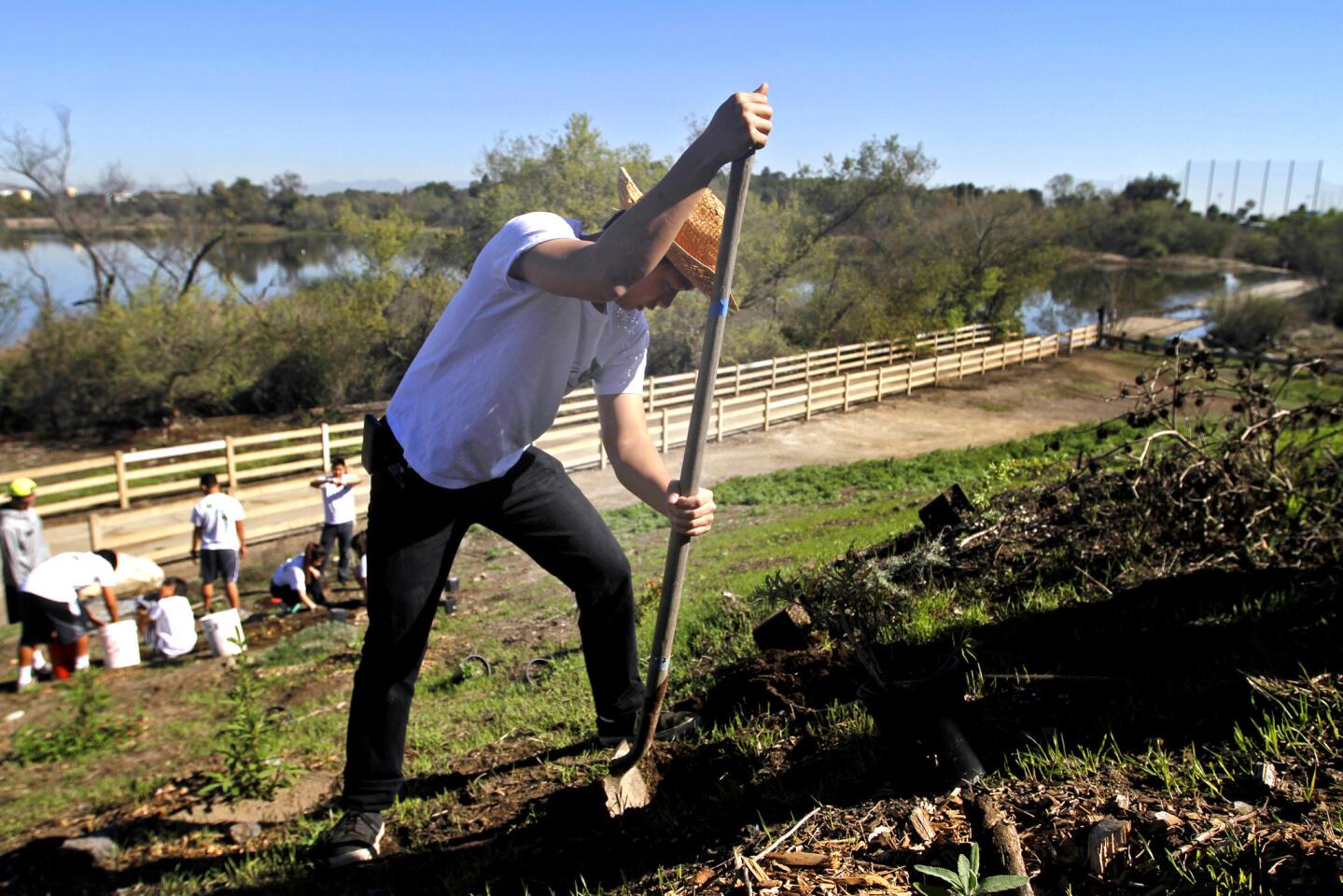
Blake Byrnes, 18, of Buena Park is among the volunteers from local schools and the nonprofit International Environmental Service Club who are planting native black sage, purple sage and coyote brush in hopes of attracting endangered species to Ken Malloy Harbor Regional Park. (Francine Orr / Los Angeles Times)
The herculean task of ridding Ken Malloy Harbor Regional Park and adjacent Lake Machado of weeds, vagrant encampments, pollutants and invasive species, including baseball-size snails and voracious water snakes, has finally begun.
Read more: At L.A.’s Lake Machado and adjacent park, a long-awaited restoration
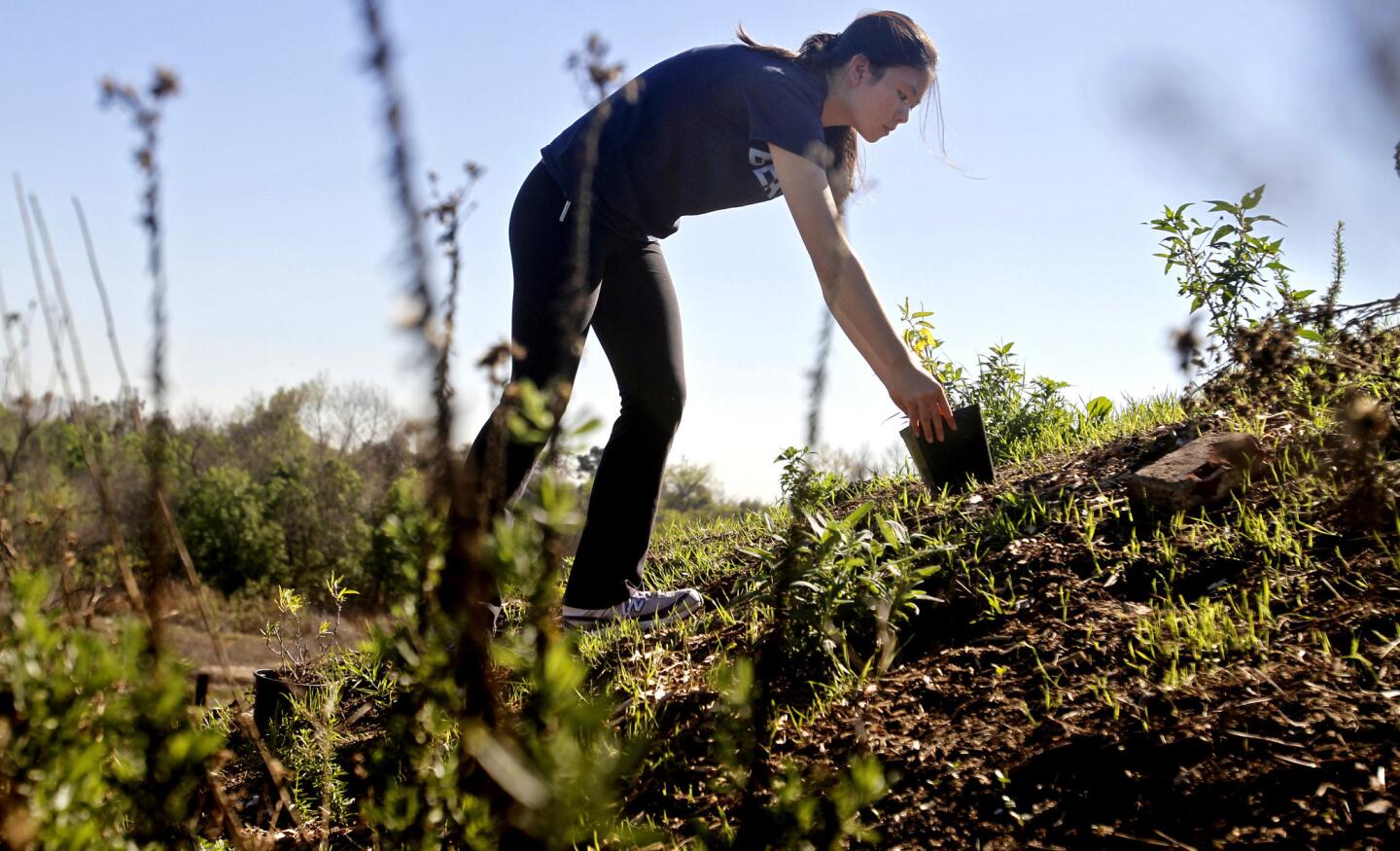
Student volunteer Daria Clark, 17, of Rancho Paloma plants sage on a hillside at the park, which had become weedy and trash-strewn. The adjacent Lake Machado had become a murky witch’s brew of pollutants and nonnative species -- including giant snails. (Francine Orr / Los Angeles Times)
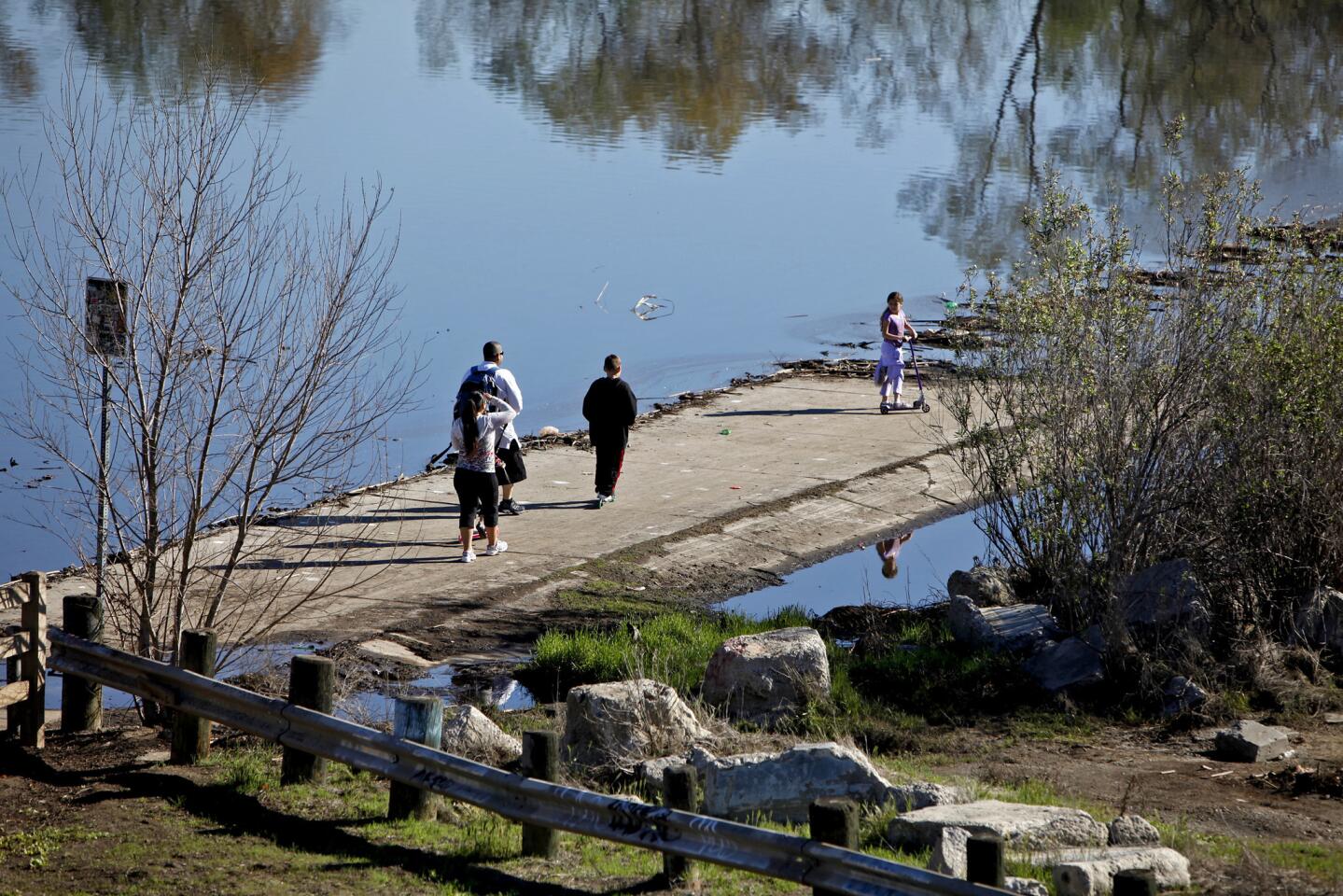
People walk through the 231-acre park, which straddles the communities of Harbor City and Wilmington. It was closed a week ago in preparation for a long-overdue restoration. The money for the makeover is part of Proposition O, a park bond initiative approved by voters a decade ago. Many park supporters blame delays on municipal neglect in a community with a largely low-income, non-voting constituency. (Francine Orr / Los Angeles Times)
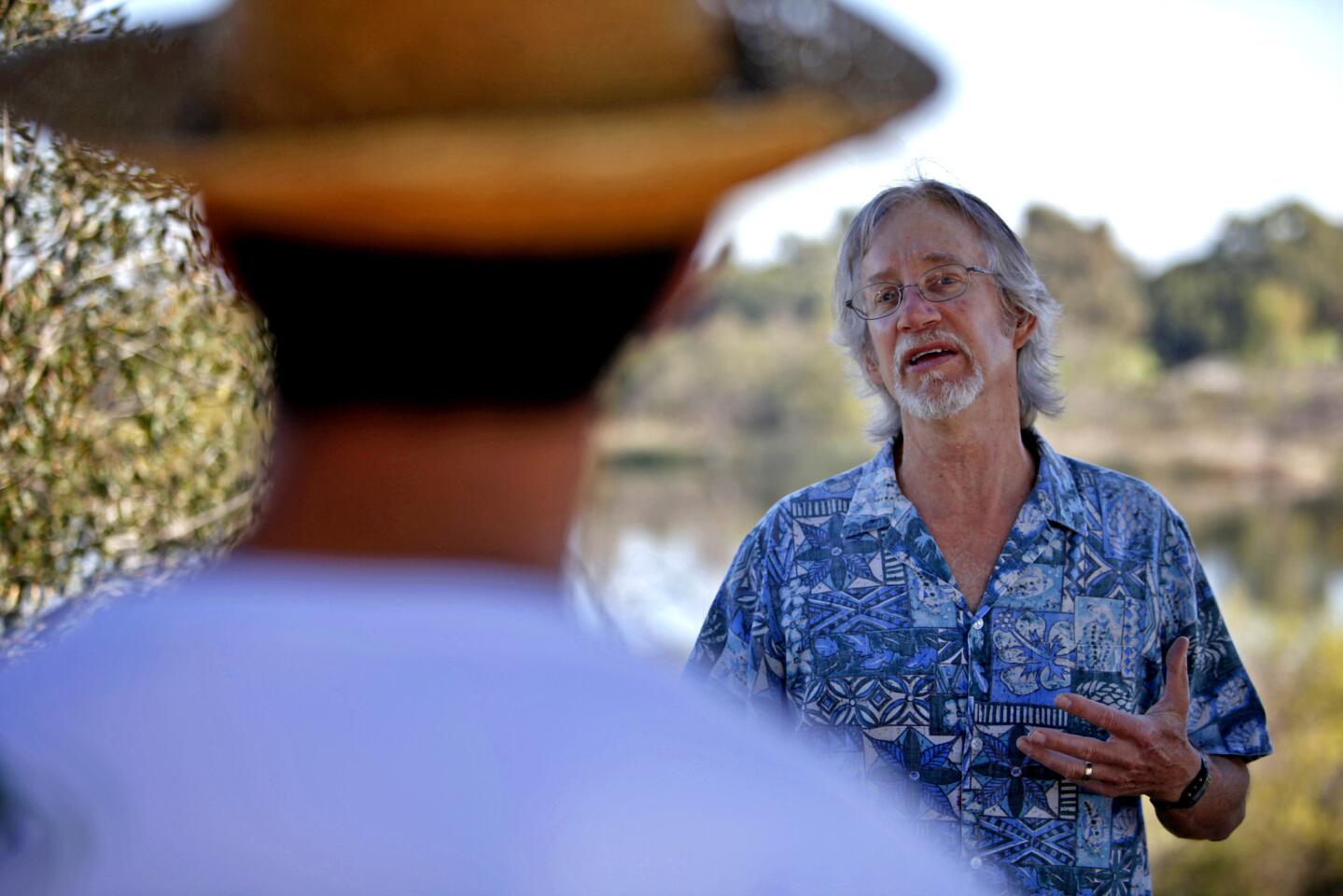
Science teacher Martin Byhower, right, speaks with a student volunteer at the park. “This has been Siberia as far as the city of Los Angeles is concerned,” Byhower said. “To us, it’s an abused paradise in desperate need of help.” (Francine Orr / Los Angeles Times)
Advertisement
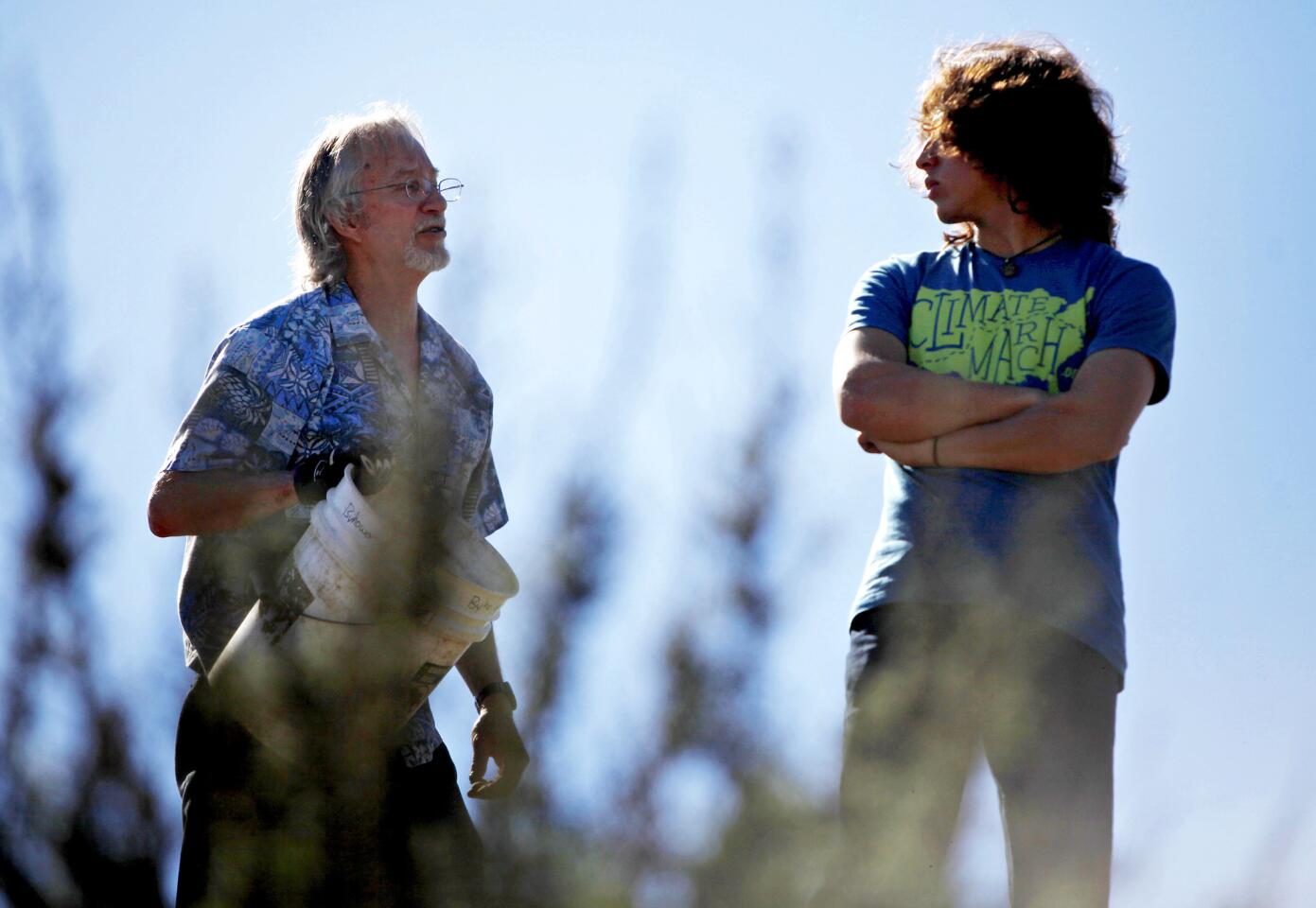
Byhower, left, 61, and his protege, Jose Sandoval, 17, a Banning High School student and expert bird watcher, bask in the results of their work -- restoration of a few more yards of what used to be one of the most productive ecosystems in Southern California. (Francine Orr / Los Angeles Times)
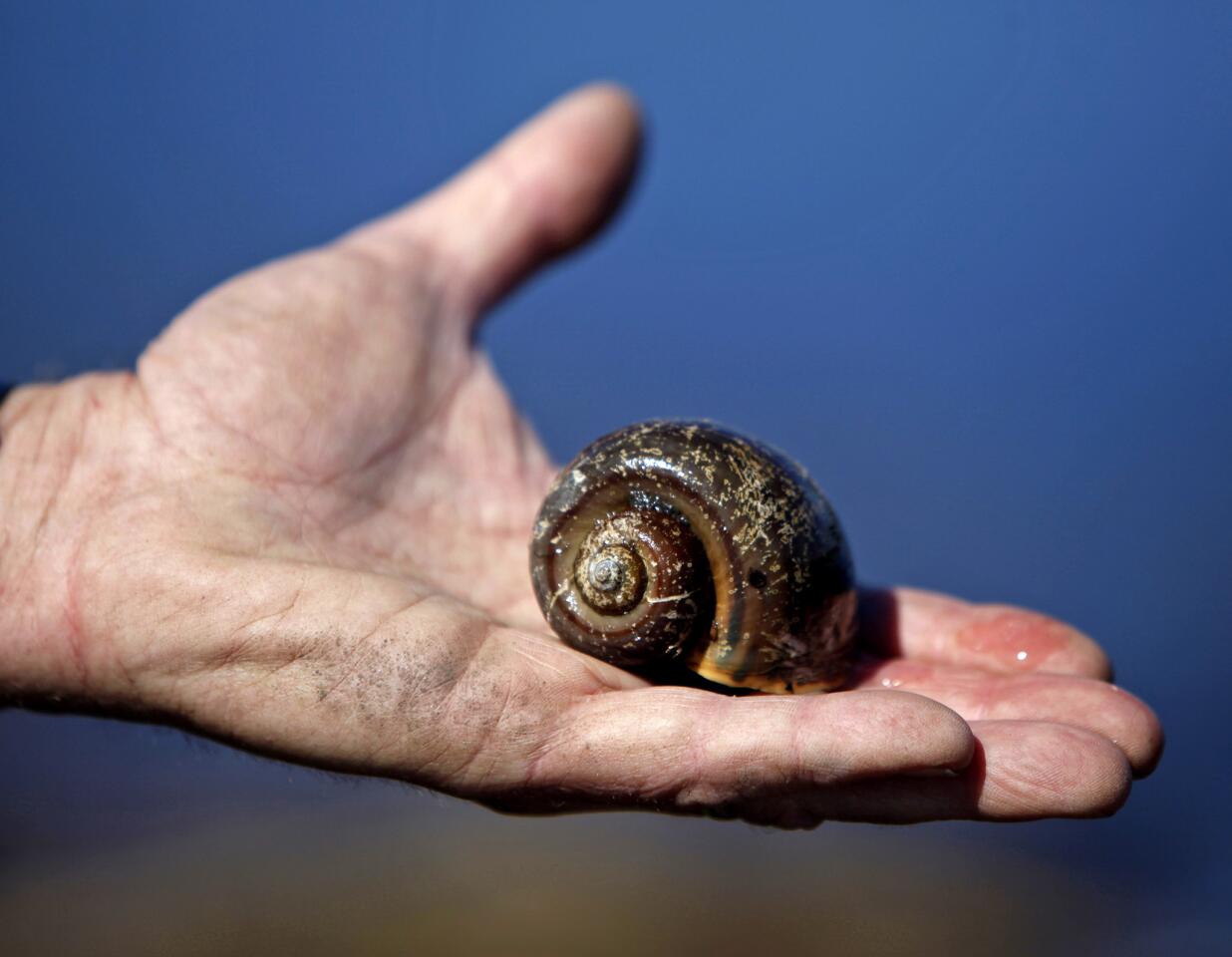
Byhower holds a nonnative snail he found in Lake Machado at Ken Malloy Harbor Regional Park. They grow as large as as baseballs. The lake is best known as the swampy hideout of the abandoned alligator Reggie, who won international fame after officials spent $200,000 trying to catch him. (Francine Orr / Los Angeles Times)
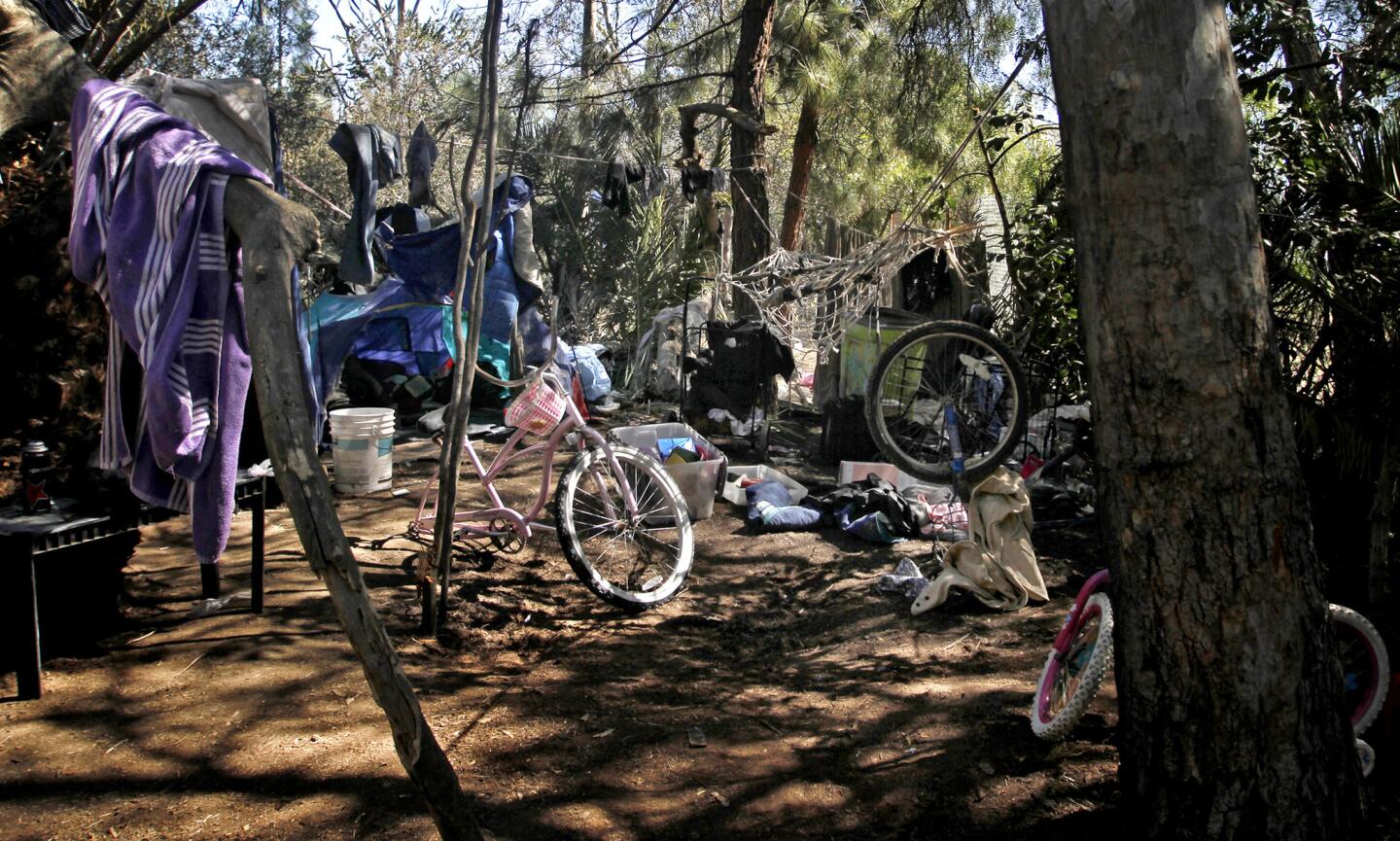
A homeless encampment at the park. When the wind kicked up on a recent Saturday morning, smoke from illegal bonfires blew across several encampments on the south end of the park. A 24-year-old woman was boiling water over a campfire at a site shared by about 20 men and women she described as “people with problems and no other place to go.” (Francine Orr / Los Angeles Times)
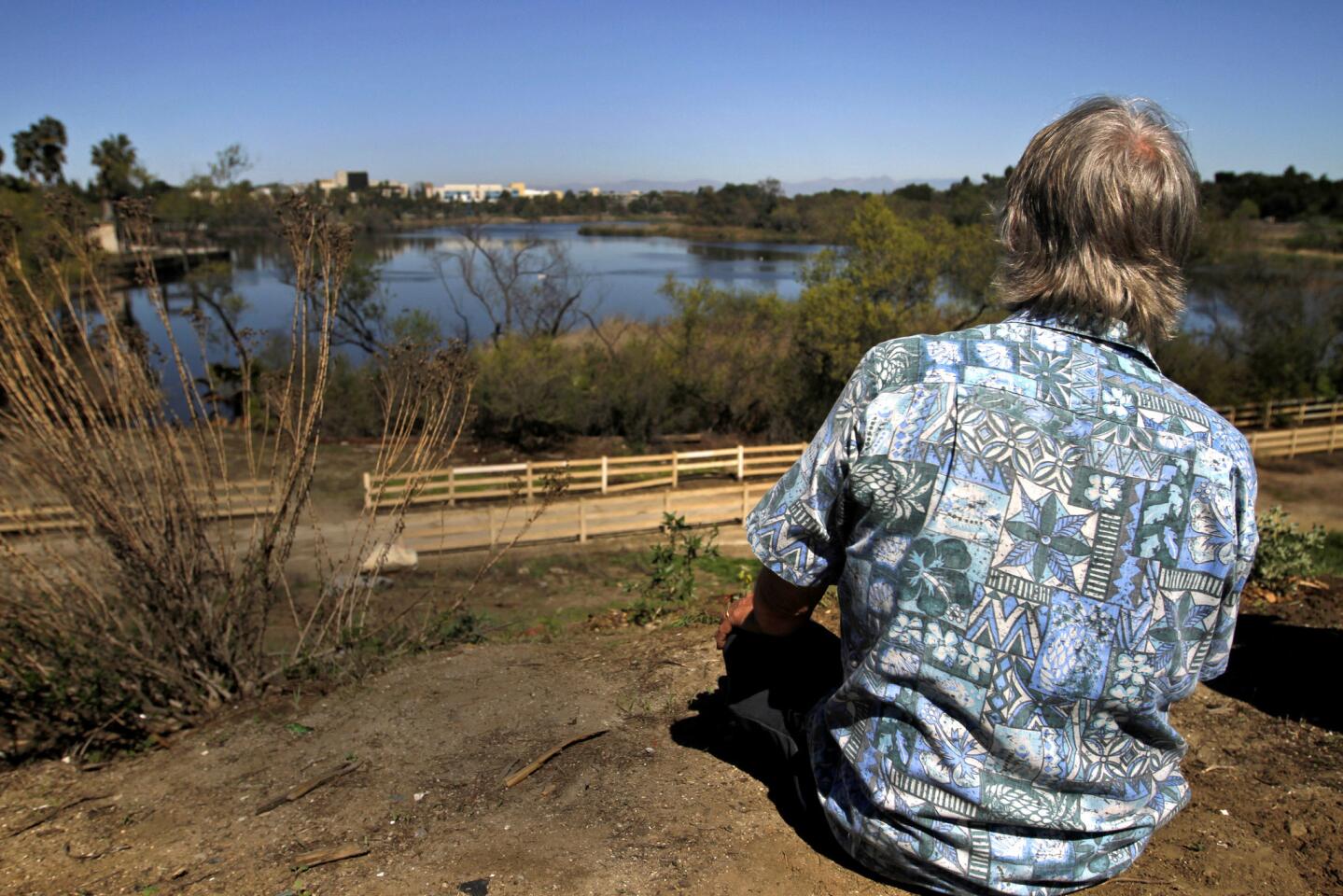
Byhower looks out over Lake Machado. “All I want is for this park to be a fraction of what it once was,” he said. “Then I’ll be happy.” (Francine Orr / Los Angeles Times)
Advertisement
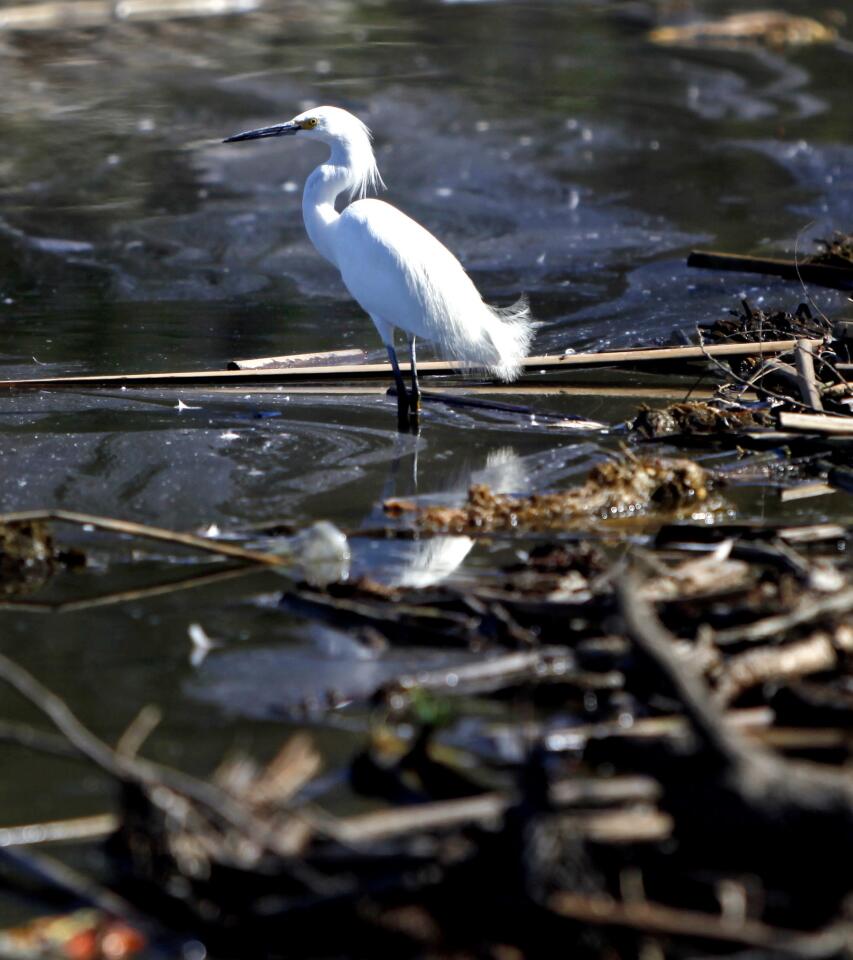
A snowy egret at the edge of murky Lake Machado. When it comes to a battered environment, few places can match Ken Malloy Harbor Regional Park, an empire of weeds, trash and vagrant encampments. But help is on the way. (Francine Orr / Los Angeles Times)
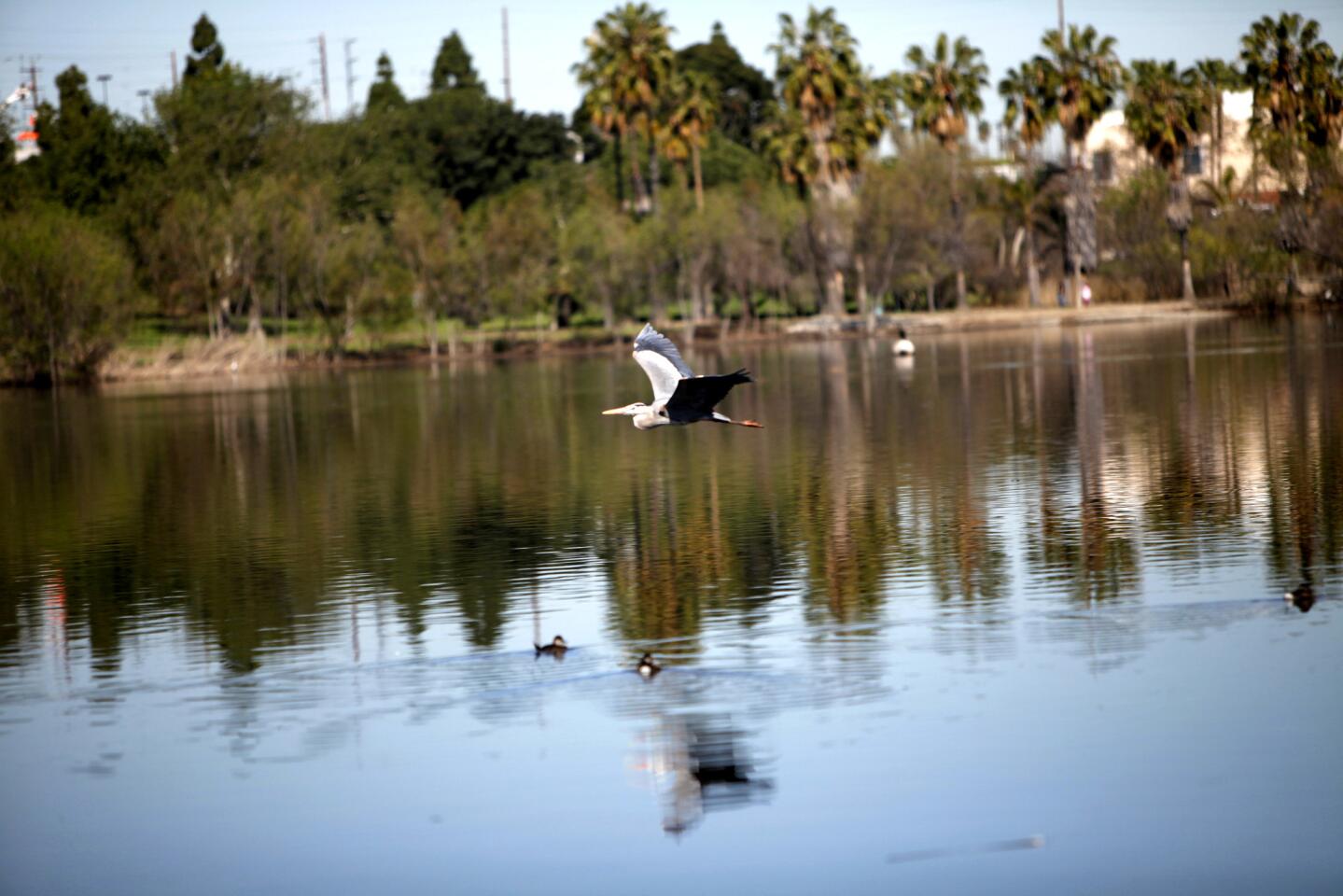
A great blue heron flies over Lake Machado. As it now stands, the lake is a state-designated “impaired water body” full of trash, algae, coliform bacteria, foul odors and hazardous substances. Adjacent habitat is strewn with broken glass. Interlopers wage paintball wars and drive vehicles through the nesting and foraging grounds of more than 300 species of birds. (Francine Orr / Los Angeles Times)







